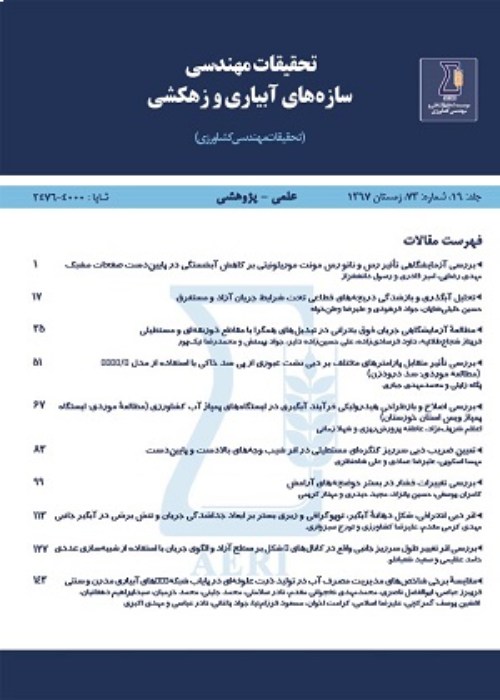Sensitivity Assessment of Soil Moisture Data Assimilation to the Number of the Sampling Depths and the Time Intervals Between Measurements Using Numerical Solution of the Richards Equation
The fundamental principles of smart irrigation hinges upon precise assessments of soil moisture content within the root zone layer. Various techniques have been developed to ascertain root zone soil moisture content, such as using soil moisture measurement sensors or simulation models. Each one of these methods has its own distinct advantages and disadvantages. Data assimilation encompasses an array of approaches that combine model estimates with the corresponding observed data to derive a more precise estimations of the required data. The purpose of this research is to ascertain the feasibility of reducing the number of depths at which soil moisture measurements were taken and increasing the time interval between two consecutive soil moisture measurements using the Ensemble Kalman filter.
This study was conducted synthetically based on information collected from four farms in Jovein, Khorasan Razavi Province, cultivating sugar beets and corn. Data was collected from four farms during the period of April to November 2020. The numerical solution of the Richards equation with the inclusion of the sink term was used to simulate the soil moisture changes in the root zone layer. To mitigate data assimilation's vulnerability to potential result divergence among members, an identification and correction mechanism, along with handling divergent members, were integrated into the system. This mechanism was found on the sudden model result shift throughout the entire root profile between two consecutive days. Two indicators were used to evaluate the scenarios: a) the sum of covariance matrix diameters at the last simulation time step, and b) the normalized root mean square difference of the soil moisture content within the soil profile, comparing the scenarios with the scenario having the largest number of soil moisture measurement depths and the shortest time interval between two consecutive measurements.
The results indicated that with the application of Ensemble Kalman filter, it is possible to improve the accuracy of the results using a longer time interval between measurements. The Data Assimilation scenarios exhibited a remarkable capability in reducing the diameter of the covariance matrix. This reduction, ranging from 61% to 86%, compared to the open-loop scenario, emphasizes the ability of Ensemble Kalman filter to effectively mitigate uncertainty. The normalized root mean square difference , was notably improved by the Data Assimilation scenarios. The normalized root mean square difference of scenarios ranged from 0.03 to 0.11, while the normalized root mean square difference for the Open Loop was 0.15, highlighting the capacity of Ensemble Kalman filter to minimize discrepancies between simulated and observed soil moisture profiles. Such reductions in normalized root mean square difference values signify the model's improved ability to capture actual soil moisture variations, thus contributing to more reliable predictions and better decision-making in agricultural water management. The application of Ensemble Kalman filter helped to select the proper measurement depths and ultimately to reduce the number of required soil measurement points.
Data Assimilation successfully diminished the uncertainty of the soil moisture content results, even when utilizing the minimum number of soil moisture measurement depths and maximum time intervals between observations. Both of these findings—increasing the time interval between consecutive measurements and reducing the required number of measurement depths—indicate that with the application of data assimilation, it is possible to decrease the cost of the implementation of the smart irrigation.
- حق عضویت دریافتی صرف حمایت از نشریات عضو و نگهداری، تکمیل و توسعه مگیران میشود.
- پرداخت حق اشتراک و دانلود مقالات اجازه بازنشر آن در سایر رسانههای چاپی و دیجیتال را به کاربر نمیدهد.


